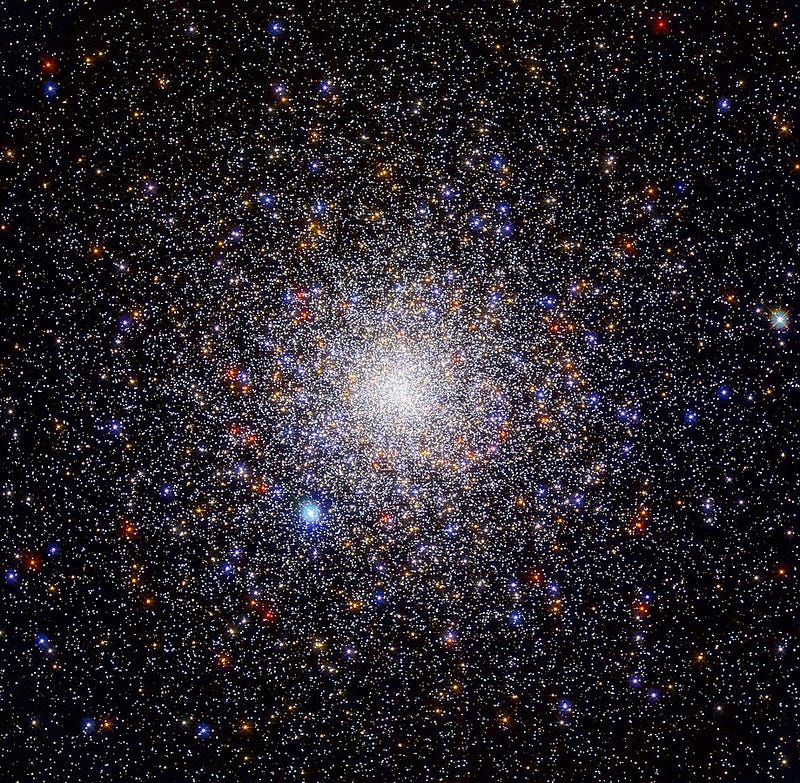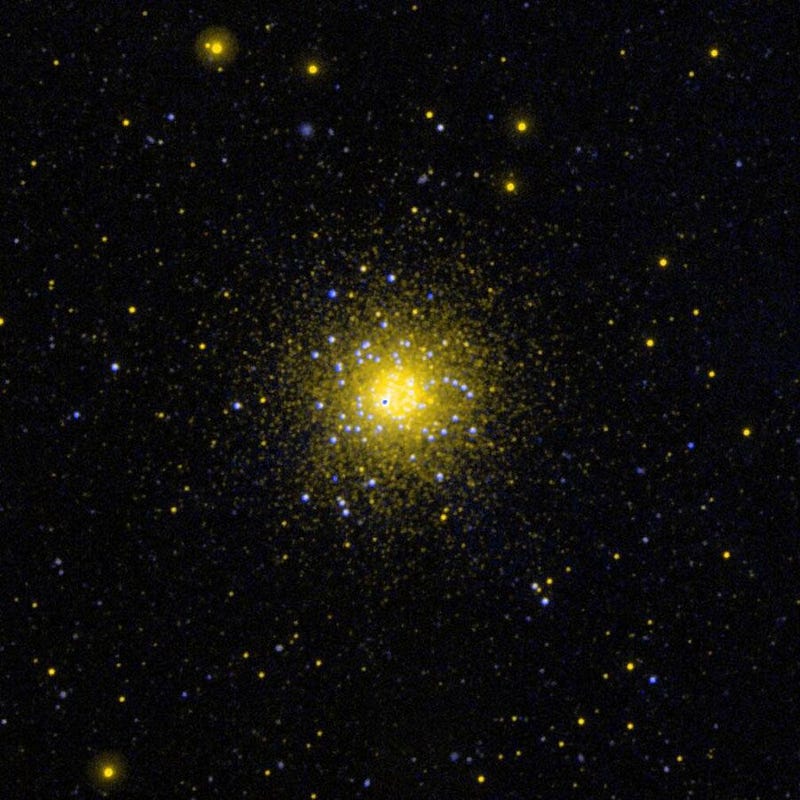An Unraveling Mystery: The Anomalous Object in NGC 1851
Written on
The Enigma of NGC 1851
Situated approximately 40,000 light-years away from our Sun, a vast congregation of stars exists. This is the globular cluster NGC 1851, located in the constellation Columba, which contains hundreds of thousands of stars. Predominantly made up of older stars, this cluster features them densely packed together, leading to significant gravitational interactions, and in extreme scenarios, even collisions.

Recently, scientists stumbled upon a perplexing object within the NGC 1851 cluster. An international team detailed their findings in the journal "Science," presenting this object as a potential neutron star, black hole, or an entirely new type of celestial entity.
Neutron Stars and Black Holes
Mass is one of the most significant characteristics of celestial bodies, influencing their lifecycle. For instance, when nuclear fusion in a star's core ceases, a massive star may culminate in a supernova—an awe-inspiring explosion that expels its outer layers and leaves behind a dense core known as a neutron star. The most massive neutron stars can reach up to about two solar masses.
In clusters like NGC 1851, it’s not uncommon for two neutron stars to approach each other, leading to a merger. This can create an object whose mass surpasses a critical threshold, resulting in a gravitational collapse, which is how black holes are formed. The lightest known black holes typically have a mass around five solar masses.
The Missing Link
There exists a notable gap between the mass of the heaviest neutron stars and the lightest black holes, specifically an object with a mass of approximately 3 to 4 solar masses has yet to be identified. However, the researchers reported in "Science" that they have found an object in the NGC 1851 cluster with a mass of 3.9 solar masses, fitting perfectly into this gap.
This object has not been directly observed. Instead, it resides in a binary system with a companion radio pulsar—a rapidly spinning neutron star that rotates 170 times per second, emitting regular pulses that have been captured by astronomers using the South African MeerKAT radio telescope.

Insights from the Pulsar
Pulsars are known for their remarkable regularity. The precise timing of their pulses has allowed researchers to deduce details about their orbit, revealing the presence of a concealed companion. This companion could either be the heaviest neutron star known or the lightest black hole—or possibly something entirely different.
"Each of these scenarios is intriguing," states Ben Stabbers, an astrophysicist from the University of Manchester and a contributor to the study. "A system involving a pulsar and a black hole could test various theories of gravity, while a heavy neutron star would offer new insights into nuclear physics at extreme densities."
Consequently, astronomers remain committed to further studying the radio pulsar and its enigmatic companion. "We have not yet concluded our work with this system," declares Arunima Dutta, co-author of the study. "Unveiling the true nature of the pulsar’s companion could significantly enhance our understanding of neutron stars, black holes, and the mysterious entities that may exist in between."
Exploring Space Mission Delays
We often encounter news about setbacks in major space initiatives, particularly those led by agencies like NASA...
Attention all readers!
As a creator on Medium.com, I face limited compensation for my endeavors. If you find my articles insightful, I would greatly appreciate your support on my "Buy Me a Coffee" page. Your contributions can significantly boost my motivation to produce quality content. Thank you for your generosity!

Discover the most unusual planets ever discovered in this fascinating video!
Immerse yourself in the mysteries of deep space and learn about anomalies in the universe in this captivating presentation.